Proper Warm

How do I properly warm up before a gym workout ?
A proper warm-up is crucial before starting any gym workout. It helps to prepare your body for the physical demands of exercise, reduces the risk of injury, and improves performance. Here are some steps to follow for a proper warm-up: 1. Start with 5-10 minutes of low-intensity cardiovascular exercise such as walking, jogging, or cycling. 2. Move on to dynamic stretching exercises that involve moving your joints through their full range of motion while gradually increasing intensity. 3. Perform activation exercises that activate specific muscle groups that you will be using during your workout. 4. Spend a few minutes rolling out areas that feel tight or sore with a foam roller. 5. Perform mobility drills that help to improve flexibility, stability, and coordination. 6. Finally, perform a few warm-up sets of the exercises you plan to do in your workout. Remember to listen to your body and adjust the duration and intensity of your warm-up based on how you feel. A proper warm-up should leave you feeling energized and ready to tackle your workout.

What are the benefits of a proper warm-up before physical activity ?
Warming up before physical activity is crucial for performance and injury prevention. Key benefits include increased blood flow, enhanced muscle temperature, joint lubrication, mental preparation, reduced injury risk, improved performance, and less muscle soreness. Incorporating a structured warm-up with dynamic stretching and specific exercises can maximize these benefits.
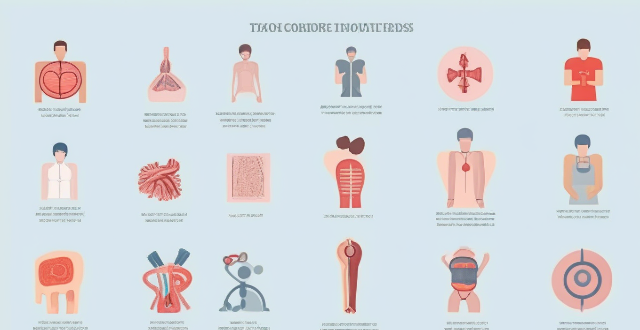
How does a warm-up affect performance in sports ?
Warming up before sports activities is crucial for enhancing performance and preventing injuries. A proper warm-up increases blood flow to the muscles, reduces injury risk, improves coordination and reaction time, and provides mental preparation. There are different types of warm-ups, including general warm-up, specific warm-up, and dynamic stretching. Incorporating these warm-up activities can optimize an athlete's performance and minimize the risk of injuries during competition.

What are some effective warm-up routines for preventing sports injuries ?
Effective Warm-Up Routines for Preventing Sports Injuries: A proper warm-up routine prepares your body for the demands of the sport or exercise by increasing blood flow, raising your heart rate, and loosening up your muscles and joints. Dynamic stretching, light aerobic exercise, sports-specific movements, foam rolling, and cooling down are effective warm-up routines that can help prevent sports injuries.
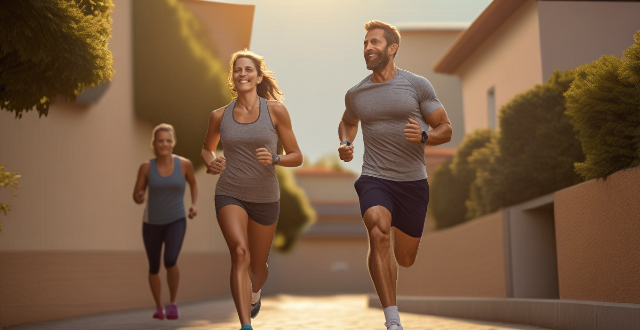
Can stretching alone be an effective warm-up for athletes ?
Stretching alone may not be sufficient as a warm-up for athletes due to limited cardiovascular benefits, insufficient muscle activation, and potential risks associated with static stretching. An effective warm-up should include dynamic stretching, sport-specific movements, gradual progression, and sufficient time to adequately prepare the body for physical activity and reduce the risk of injury.

How does proper insulation contribute to energy efficiency ?
Proper insulation is crucial for energy efficiency, providing thermal comfort, reducing energy costs, and alleviating strain on power grids. It also improves indoor air quality by controlling moisture and limiting allergens. Furthermore, it decreases greenhouse gas emissions, supports sustainable living, and offers long-term economic benefits like higher property value. Implementing proper insulation involves sealing air leaks, considering R-values, and focusing on key areas like attics and basements.
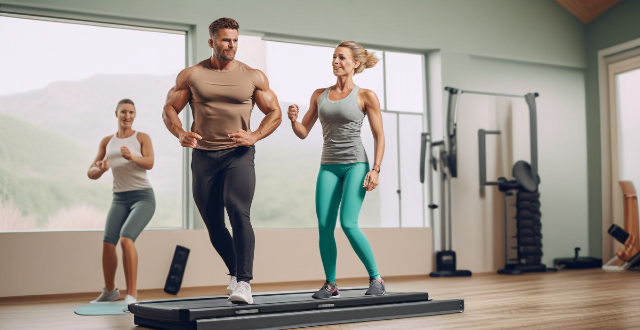
Is it necessary to do a warm-up even for low-intensity workouts ?
A proper warm-up is crucial for any workout, including low-intensity exercises. It increases blood flow and oxygenation, raises muscle temperature, improves range of motion, primes the nervous system, reduces injury risk, and boosts performance. Even for gentle activities like walking or yoga, a warm-up enhances mental focus, gradually activates muscles, promotes consistency, supports joint health, and eases into stretching. Warm-up ideas include walking, dynamic stretching, Tai Chi movements, Pilates exercises, and deep breathing or meditation. Incorporating a warm-up before any workout is essential for maximizing performance, reducing injury risk, and enhancing overall health benefits.

What are some effective warm-up exercises before starting a run ?
This article emphasizes the importance of warm-up exercises before starting a run. It discusses the benefits of dynamic stretching and light aerobic activities, such as high knees, butt kicks, leg swings, jogging in place, side shuffles, and high knees forward march. It also mentions static stretching as an optional component of warm-up routines, focusing on major muscle groups used during running. Finally, it highlights the necessity of proper cool-down and stretching post-run to aid muscle recovery and reduce soreness.

What are some effective methods for reducing muscle soreness after a workout ?
Effective Methods for Reducing Muscle Soreness After a Workout includes proper warm-up and cool down, staying hydrated and consuming proper nutrition, getting adequate rest and sleep, foam rolling and massage, and heat and cold therapy.

Should warm-up routines vary based on the individual's fitness level ?
In this article, we have discussed the importance of warm-up routines and whether they should vary based on the individual's fitness level. We concluded that while there are general principles that apply to most warm-up routines, it's important to tailor your warm-up to your individual needs and goals. By doing so, you can optimize your performance and minimize the risk of injury during your workouts.

Are there different warm-up routines for various types of sports ?
Warm-up routines vary by sport to prepare the body for activity and prevent injury. Examples include dynamic stretches, light exercises, and specific drills tailored to each sport's physical demands.
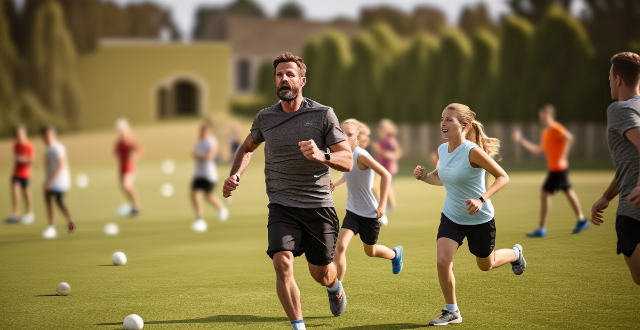
How long should a warm-up session typically last before engaging in sports ?
Warming up is crucial for sports to prevent injuries and prepare the body. The duration varies by sport type, fitness level, and activity intensity, generally lasting 5-15 minutes. Effective warm-ups include low-intensity activities, dynamic stretches, and sport-specific exercises.

Are there any specific stretches or warm-up routines that aid in sports recovery ?
Recovery is an essential aspect of sports and physical activities. Stretching and warm-up routines can aid in reducing the risk of injuries, improving performance, and enhancing overall well-being. Specific stretches such as hamstring, calf, and quadriceps stretches can increase flexibility, reduce muscle tension, and promote blood flow. Warm-up routines like cardiovascular exercises, resistance band exercises, and foam rolling can activate muscles, improve circulation, and reduce tightness. Incorporating these routines into your recovery process can help you achieve better results and prevent injuries.
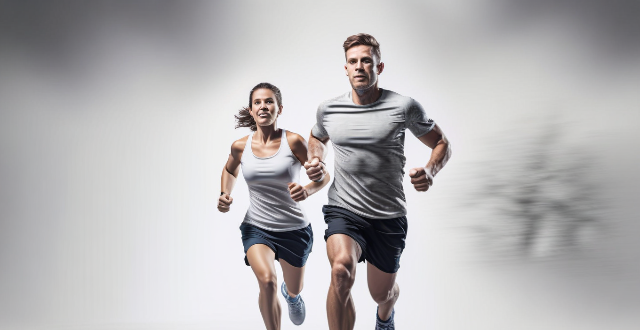
What are some dynamic warm-up exercises that can be done before running ?
Dynamic warm-up exercises are essential for runners to improve performance and reduce injury risk. These include high knees, butt kicks, leg swings (front and side), walking lunges, toy soldiers, ankle circles, side shuffles, plank to runner's lunge, jumping jacks, and light jogging. Each exercise targets specific muscles and joints, enhancing mobility, flexibility, and circulation. Completing these warm-ups prepares the body for running, ensuring better efficiency and comfort during the activity.

How does proper cooking and baking contribute to food safety ?
Food safety is crucial for maintaining public health and preventing illnesses. Proper cooking and baking are vital components of food safety, as they can destroy harmful microorganisms that may contaminate raw ingredients. High temperatures during cooking and baking kill most bacteria, reduce viruses, and eliminate parasites. Additionally, proper cooking practices prevent cross-contamination by using separate utensils and cutting boards for different types of food. To ensure food safety during cooking and baking, it's essential to use a food thermometer to check the internal temperature of cooked foods, follow recipes and time guides, keep work surfaces and equipment clean, store raw and cooked foods separately, avoid overcrowding pans, and refrigerate leftovers promptly. By adopting these best practices, you can significantly minimize the risk of foodborne illnesses and enjoy safe, delicious meals.

How can we prevent injuries in competitive sports ?
Injuries are common in competitive sports, but there are ways to prevent them. Proper warm-up and cool-down exercises, use of protective gear, proper technique and training, adequate rest and recovery time, hydration and nutrition, and mental health awareness are all important factors in injury prevention. By following these tips, athletes can minimize their risk of injury while still enjoying the benefits of competitive sports.

How can I improve my running form and avoid injuries ?
Improving your running form is crucial for both performance enhancement and injury prevention. Here are some tips on how to improve your running form and avoid injuries: 1. Proper Warm-Up and Cool-Down 2. Focus on Posture 3. Foot Strike and Landing 4. Cadence and Step Length 5. Strength Training and Cross-Training 6. Wear Proper Footwear 7. Gradual Progression 8. Listen to Your Body

What are the most common sports injuries and how can they be prevented ?
Common sports injuries include knee, ankle, shin, shoulder, hamstring, concussions, Achilles tendinitis, wrist, swimmer's shoulder and runner's knee. Injury prevention strategies include strengthening exercises, proper warm-up/cool-down routines, wearing supportive shoes and protective gear, gradually increasing the intensity of physical activity, stretching before and after exercise, and learning proper techniques to avoid head collisions or overusing certain muscles.

How does proper handwashing technique prevent the spread of germs ?
Proper handwashing is a simple yet effective way to prevent the spread of germs. It involves using soap and water to clean your hands thoroughly, especially before eating or preparing food, after using the restroom, and after being in contact with someone who is sick. The key points on how proper handwashing technique can help prevent the spread of germs include: - Wet your hands with clean, running water (warm or cold), turn off the tap, and apply soap. - Lather your hands by rubbing them together with the soap. Be sure to lather the backs of your hands, between your fingers, and under your nails. - Scrub your hands for at least 20 seconds. Need a timer? Hum the "Happy Birthday" song from beginning to end twice. - Rinse your hands well under clean, running water. - Dry your hands using a clean towel or air dry them. By following these steps, you can effectively remove dirt, viruses, and bacteria from your hands, which can help prevent the spread of germs that cause infections like the common cold and flu. Additionally, proper handwashing technique can also help prevent the spread of more serious illnesses such as COVID-19, Ebola, and norovirus.

What are some effective ways to prevent knee injuries in sports ?
Knee injuries are common among athletes and can be quite severe, potentially leading to long-term damage or even the end of an athlete's career. There are several effective ways to prevent knee injuries in sports: 1. Proper Warm-Up and Cool-Down: A proper warm-up prepares your body for physical activity by increasing blood flow and warming up muscles. It should include gentle cardio exercises and dynamic stretches that mimic the movements you will perform during your sport. After exercise, gradually reduce your activity level with light stretching and walking to help remove lactic acid from your muscles and prevent stiffness. 2. Wear Appropriate Footwear: Choose shoes specifically designed for your sport that offer adequate support, cushioning, and shock absorption. Replace them regularly as they lose their ability to protect your knees over time. If needed, custom orthotics can provide additional arch support and correct any imbalances in foot alignment. 3. Strengthen Key Muscle Groups: Strong quadriceps help stabilize the patella (kneecap) and protect the knee joint. Exercises like leg presses, squats, and lunges can strengthen these muscles. Flexible hamstrings allow for proper knee extension and flexion during activities like running or jumping. Include hamstring curls and glute bridges in your routine. Strong glutes improve hip stability, which affects knee alignment. Include exercises like hip thrusts and fire hydrants in your workouts. 4. Improve Flexibility and Mobility: Regular static and dynamic stretching can increase flexibility around the knee joint, reducing the risk of injury. Focus on stretching the calves, hamstrings, quadriceps, and IT band. Incorporate mobility drills into your warm-up to improve range of motion at the knee joint. This could include ankle circles, high knees, or butt kicks. 5. Maintain Proper Technique: Ensure that you maintain proper form and alignment during all sports activities. Misaligned movements can place unnecessary stress on the knees. Work with coaches or trainers who can provide feedback on your technique and suggest modifications to reduce strain on your knees. 6. Cross-Train and Rest: Participating in low-impact activities like swimming or cycling can help build overall fitness while reducing repetitive stress on your knees from high-impact sports. Allow sufficient rest days between intense training sessions to give your body time to recover and avoid overuse injuries. 7. Use Supportive Gear When Needed: For athletes with pre-existing knee conditions or those returning from an injury, wearing supportive gear can provide additional stability and protection during activity. Kinesiology tape applied around the kneecap can help reduce pain and improve muscle function by providing subtle cues to the body about proper movement patterns.
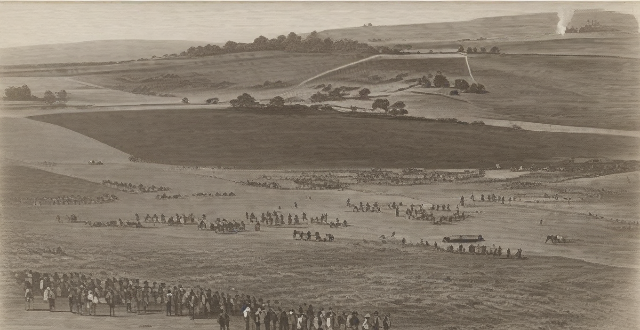
How can I prevent sports injuries ?
Sports injuries can be prevented by following these five key tips: warming up and stretching before physical activity, wearing proper gear, using proper technique, staying hydrated and nourished, and taking breaks and rest days. By implementing these measures, athletes can reduce their risk of injury and stay safe while playing sports.
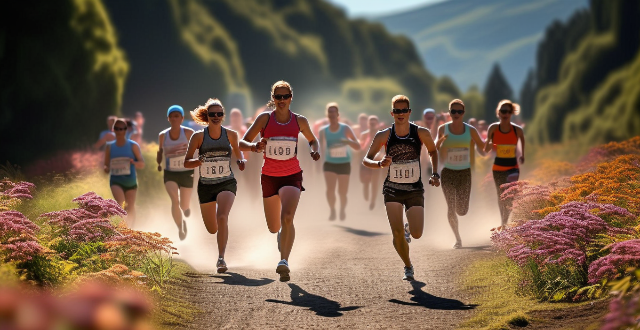
How can I maintain proper pacing during a race or long run ?
Maintaining proper pacing is crucial for achieving your best performance in a race or long run. To do this, set a realistic goal time based on your training and past performances. Start the race at a slower pace than your goal pace to warm up your muscles and avoid starting too fast. Use a running watch or app to track your pace and distance during the race, and focus on your breathing to maintain a steady rhythm. Stay hydrated by drinking water or sports drinks regularly, and adjust your pace as needed if you feel like you're running too fast or too slow. Practice pacing in training so that it becomes second nature during races. By following these tips, you can achieve your best performance while listening to your body and adjusting your pace as needed.

What is the proper breathing technique while running ?
Proper breathing technique is crucial for runners to improve performance, reduce fatigue, and prevent injuries. Diaphragmatic breathing involves taking deep breaths using the diaphragm muscle for efficient oxygen exchange. Rhythmic breathing matches breathing rhythm to stride pattern, promoting even and consistent breathing. Nasal breathing warms and humidifies air, but mouth breathing can be used when necessary. Relaxation and good posture are also important for optimal breathing mechanics. Incorporating these techniques into your running routine can enhance your overall running experience.
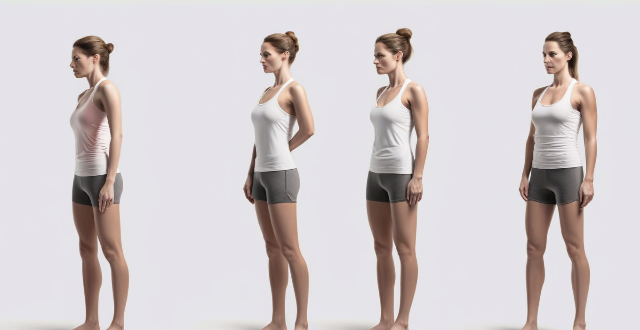
Why is it important to warm up before exercise ?
Warming up before exercise is crucial for preparing the body, preventing injuries, and improving performance. Benefits include increased blood flow, raised body temperature, loosened joints, prepared nervous system, reduced cardiovascular risk, and enhanced workout results.

What are the best ways to wash clothes quickly and effectively ?
This article discusses the best ways to wash clothes quickly and effectively. It covers preparation steps such as sorting clothes, pre-treating stains, and checking pockets. It also explains how to set up a washing machine with the right cycle, warm water, and detergent. Handwashing clothes is another option that involves soaking clothes in warm water with detergent, scrubbing gently, rinsing thoroughly, and hanging to dry. After washing, drying clothes properly is important to prevent wrinkles and damage. Overall, following these steps can help you save time and keep your clothes clean and fresh.

Are there any safety precautions I should take when working with an electronic speed controller ?
Working with electronic speed controllers (ESCs) requires careful attention to safety precautions to prevent injuries or damage to equipment. Some important safety measures include disconnecting power sources, wearing protective gear, using proper tools, following manufacturer's instructions, keeping away from flammable materials, being cautious with high voltage, avoiding overloading, and seeking professional help if unsure about proper installation or operation.

What are the symptoms of hypothermia and how can I treat it ?
The text discusses the symptoms and treatment of hypothermia, a condition that occurs when the body loses heat faster than it can produce. Symptoms include shivering, slurred speech, slow breathing, weak pulse, clumsiness, drowsiness, confusion, and loss of consciousness. Treatment involves moving the person to a warm location, removing wet clothing, warming them up gradually with blankets or hot water bottles, giving them warm fluids, and seeking medical attention immediately. The text emphasizes the importance of prevention by dressing appropriately for cold weather conditions, staying dry, and limiting time outdoors during extreme weather events.

How important is proper footwear in preventing sports injuries ?
The importance of proper footwear in preventing sports injuries is discussed, highlighting the need for ankle support, cushioning, traction, arch support, and toe protection. Wearing suitable shoes can help reduce the risk of sprains, strains, fractures, and other injuries common in sports. It is crucial to choose shoes that fit well, offer adequate support, and are appropriate for the specific sport or activity.